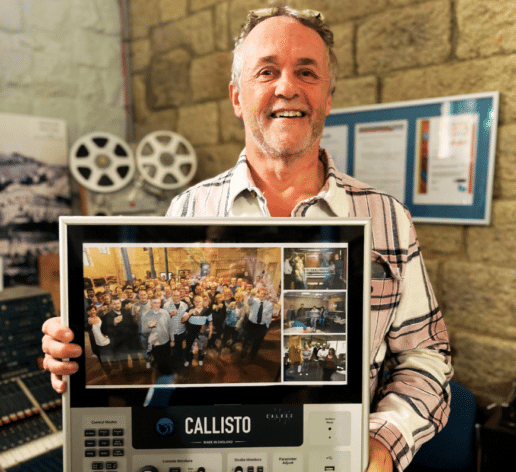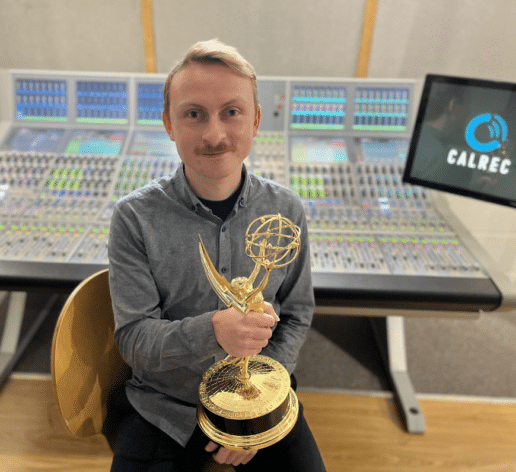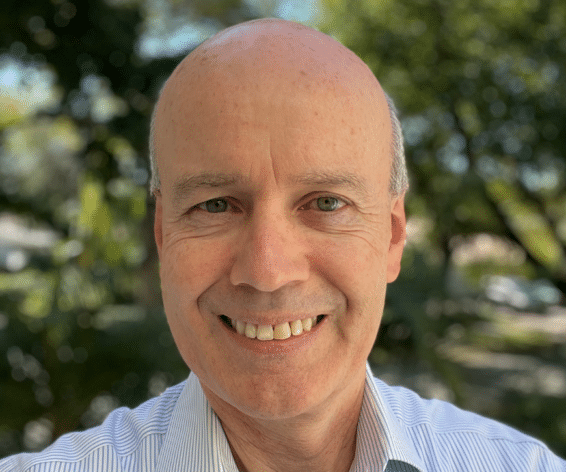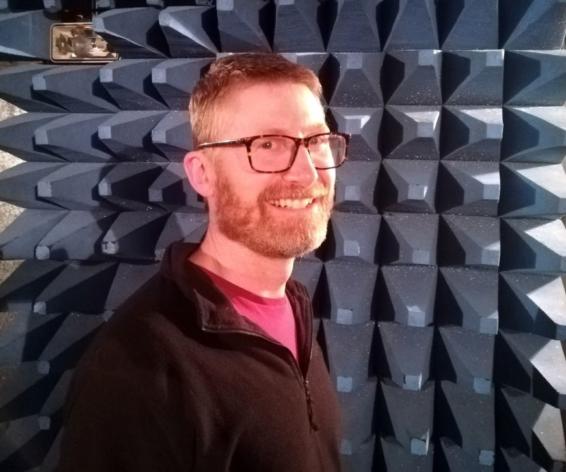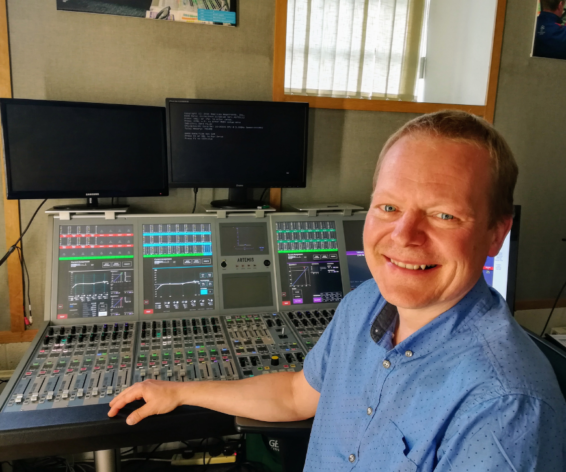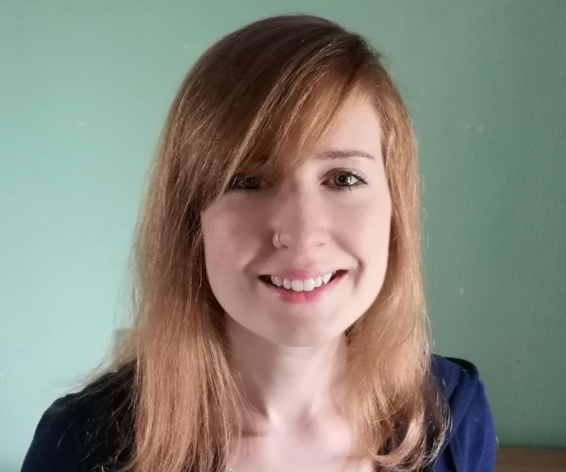Making his Mark on broadcast audio
What were the biggest audio milestones in 1978?
Apart from the obvious (Kate Bush making her UK Top 10 debut in 1978 with Wuthering Heights and the start of regular British Parliament broadcasts).
Well, it was the year that Calrec Audio launched the world’s first single point-source Soundfield microphone (now used in every single Premiership football stadium), and it just so happened to be the year that Mark Smith joined Calrec as a Wiring Technician.
Celebrating its 60th anniversary in 2024, Calrec has been shaping and developing broadcast audio since 1964, and Mark has played a big part in that story.
Having spent his entire working career at Calrec, Mark retired after 45 years of service at the end of 2023.
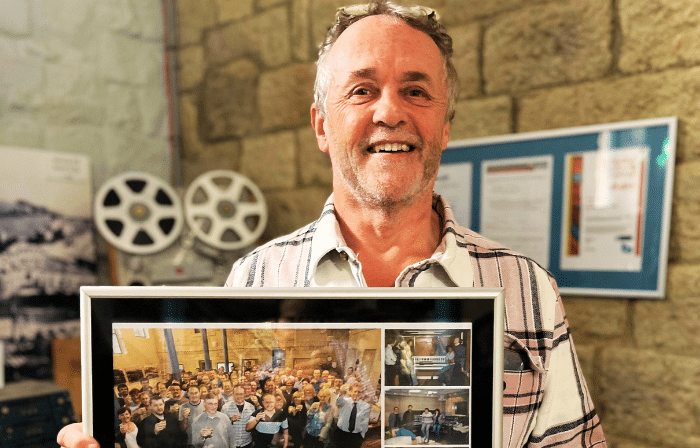
The evolution of broadcast audio
Groundbreaking is an overused term, but in those 45 years, there have been some groundbreaking developments. Since Mark joined Calrec, the broadcast audio industry has moved from analogue to digital, from copper to fibre, and from traditional broadcasting to distributed working.
Streaming means that over-the-air delivery is no longer the dominant delivery model and even the audio formats we listen to have developed from mono to stereo, surround and immersive. With broadcast audio personalisation just around the corner, broadcasters show no signs of slowing down.
Mixing consoles have provided the ability to manage all of these changes, which means Mark is in a very exclusive club. His entire career was dedicated to enabling Calrec customers to continually push the boundaries of technology.

Getting started
“I started out wanting to work at the BBC, but I didn’t want to move away from home!” laughs Mark, who, like Calrec, is resolutely and proudly from Yorkshire. “I went to Huddersfield Technical College to study Electrical Engineering and at 19 I started working for Calrec. I learned how to wire a console and progressed from wiring consoles to generating wiring schedules and a promotion to Wiring Supervisor. Back then mixing console construction was very labour intensive, taking thousands of hours and teams of Wiring Technicians to build a desk.
“Every cable had a four-digit number which needed to be listed. I would look at a schematic and translate it into lengths of wire that went from point A to point B. With no printed circuit boards (PCBs) in the console chassis, everything was wired, and even mix busses were made from lengths of tin copper wire and resistors. At its peak, there were 17 people working in the Wiring Department and construction was like a 3D jigsaw puzzle working out where it physically goes.
“On site we also had to work out how much cabling was required to get around the building and I worked closely with Construction Managers on new broadcast facilities to help design the cabling infrastructure.”
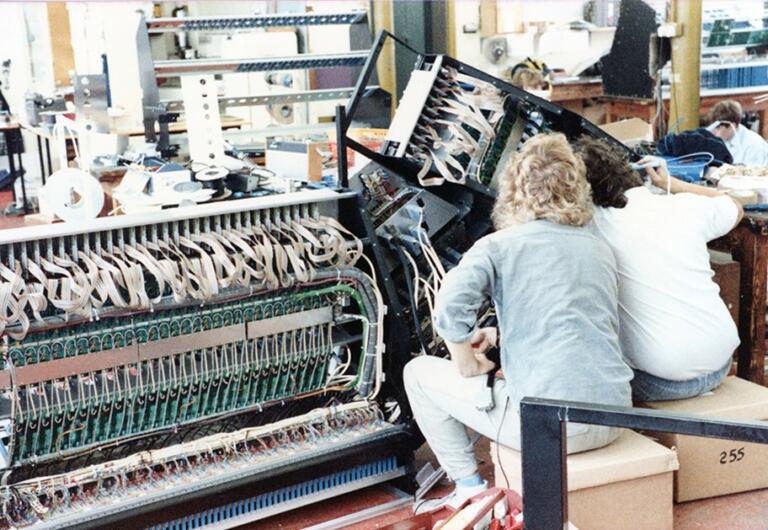
Project engineering
In 1984, Calrec implemented changes to improve productivity with the introduction of Project Engineers to manage every order and be a customer point of contact to track progress and answer any questions that arose during the manufacturing process.
Mark was made a Project Engineer and remained one for the rest of his career.
His years of onsite work meant that he could relate to both the needs of onsite engineers as well as the practical considerations of the manufacturing process.
It is an important role and Project Engineers are still at the heart of every Calrec order as the link between the customer, the factory, and R&D.
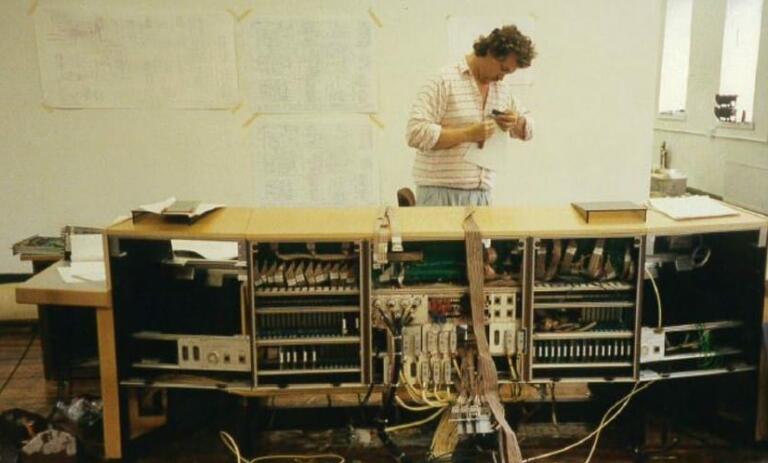
Moving with the times
Other developments were also underway. As an early adopter of CAD for manufacturing in the 1980s, Calrec has always aimed to implement processes which streamline production and adapt to changing requirements.
Calrec started using PCBs in the chassis which removed some of the more labour-intensive wiring looms meaning a console chassis took days to build rather than months.
Mark also oversaw the implementation of electronic Material Requirement Planning (MRP) and Module/Card Assembly Production (MCAP) lists which made Project Management more efficient.
Meanwhile, digitally controlled analogue mixing consoles like the VCS in 1985 and the T Series in the late 1990s moved the goalposts and the switch to digital consoles with the award-winning Alpha in 1999 meant that surfaces were even easier to build, with more reliance on firmware and software, and less painstaking wiring.
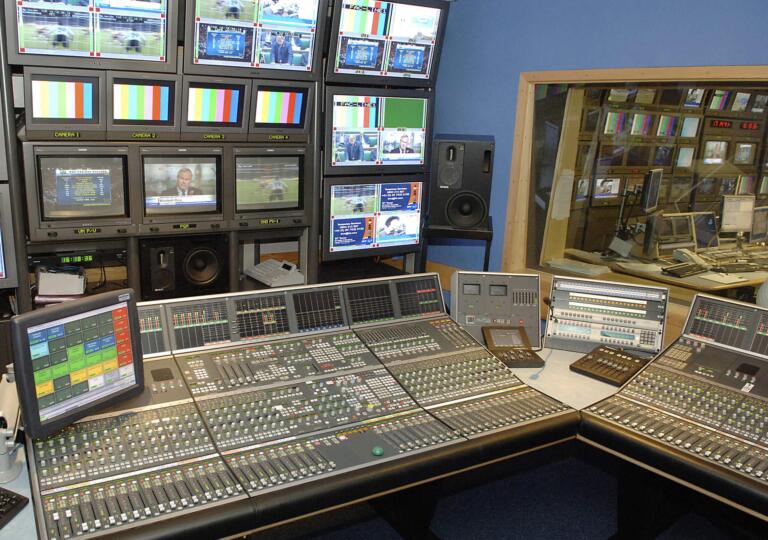
Doing more with less
But all these advances didn’t mean Mark could relax. On the contrary, better tools meant that broadcasters could do much more, and as a result, projects became increasingly complex.
“Installation work remained a massive undertaking,” he says. “Cabling infrastructures from studio floors to control rooms can span several floors and although fibre makes it a lot simpler, we used to run multiple lengths of heavy copper cable which were hundreds of metres long. One installation at BBC Television Centre required about 20,000 connections for one control room and sometimes it would take up to 12 people just to pull cabling through; now everything is on a single length of fibre!
“The Harlequin refurbishment at Sky in the early 2000s was a huge job which required the installation of five 88- fader Apollo consoles and 50 modular I/O boxes across five studios. It meant being away from home for months at a time, but it was so enjoyable and a definite career highlight.”
The adoption of digital console technology had a huge effect on both what broadcasters could achieve as well as on console development and construction. But Mark insists that some things have always remained exactly the same.
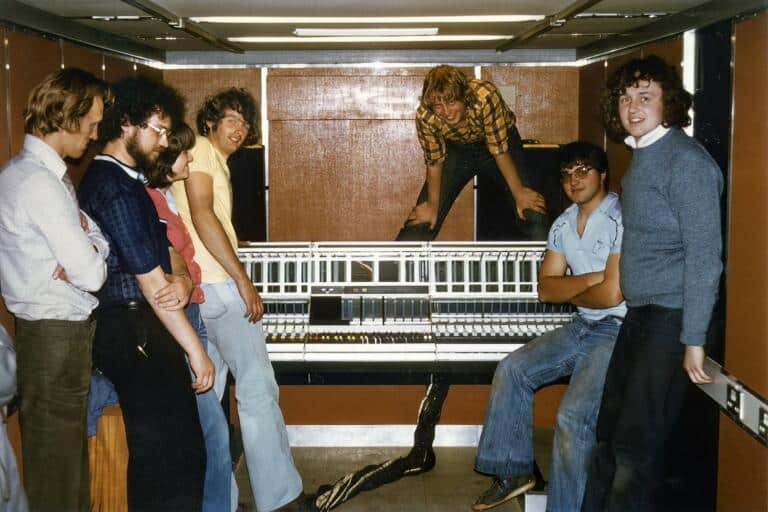
Customer needs
“The customer should always receive their console on time, and they should always get more than what they need from the project,” he says. “Delivering on customer requirements has always been a priority, and Calrec has always offered custom options, whether that is designing custom metalwork or changing console layouts to meet specific requirements.
“For the Royal Opera House, we designed a console which could flip on its back to move it from the stalls to the balcony, as well as through doorways. We designed consoles with ashtrays, pen trays, and bespoke trims and panels. We built offsets to the left and right, symmetrical layouts, custom metering/displays and positioning the operator at different points around the desk.
“Many of Calrec’s desks for Sky had wedge sections, while the 96-fader Apollo at BBC Sport is a single console split up into five different sections; three at the front of the room, one at the side and one at the back. It makes the most efficient use of the space, and its multi-console functionality means three people can operate the same surface.”

New challenges
With distributed and remote working now standard broadcast workflows, flexibility is even more important today, which is why Calrec technologies like Argo are designed to support broadcasters’ changing needs.
That commitment to support customer requirements has always been a focus, but after 45 years working directly with broadcasters, Mark now has something different to focus on.
“It has been fun and challenging, and I will miss the people; both my colleagues at Calrec and our customers.
“Without a doubt, it’s the fantastic people that made my time at Calrec a thoroughly enjoyable experience.”
* not many, but there are several other Calrec employees who are also members!



